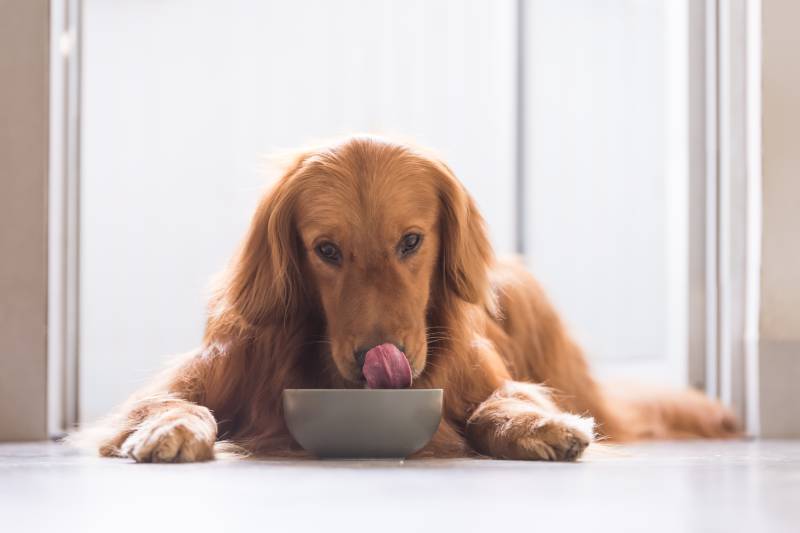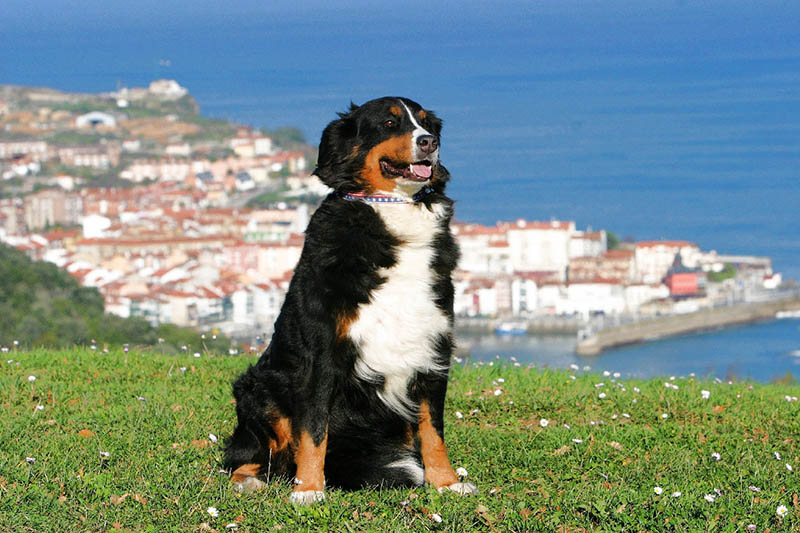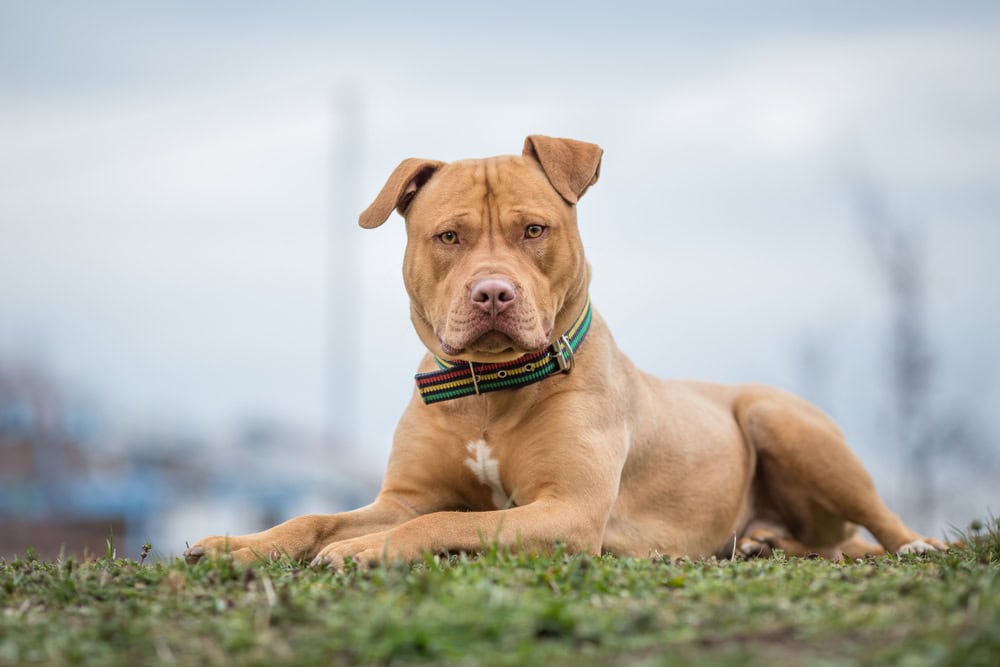How to Correct Food Aggression in Dogs: 9 Vet Approved Tips

Updated on
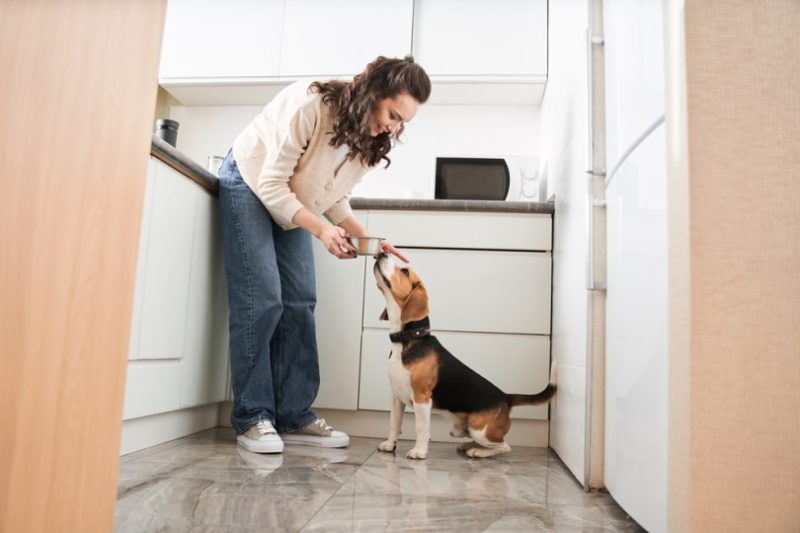
Click to Skip Ahead
Is your pet becoming defensive around mealtimes or when getting treats? This behavior, known as food aggression, can be instinctive due to an inherited pack mentality and evolution in your pet’s breeding.
On the other hand, it can also result from a more recent trauma in which the pet becomes insecure over its food resources and feels threatened. Read on to learn more about food aggression and how to correct it.
What Is Food Aggression?
Food aggression is a form of resource guarding in which the dog may exhibit several behaviors to defend their food against both humans and other animals. There are different levels of aggression:
| Mild | the dog stiffens and growls around their food or crowds their bowl |
| Medium | the dog snaps or lunges at people or animals nearby |
| Severe | the dog attacks and bites |
It is important to address food aggression because it can spread to other territorial disputes in the house, leaving you with a guarded and defensive pet. Like human psychology, it is also important to understand and empathize with the root causes of your pet’s behavior so that rather than punishing them, you seek to develop their security and lower their stress.
The Context for Food Aggression
Certain breeds of dogs are more prone to aggressive behavior and, therefore, may be naturally more domineering around their personal resources, such as food. Understanding if this is the case with your pet can give more context for their behavior.
On the other hand, a pet that was abandoned early in life, forced to compete for food with other dogs on the street or in a shelter, or recently had a trusted caretaker pass away may be exhibiting food aggression as a behavioral change and sign that they lack confidence and trust.
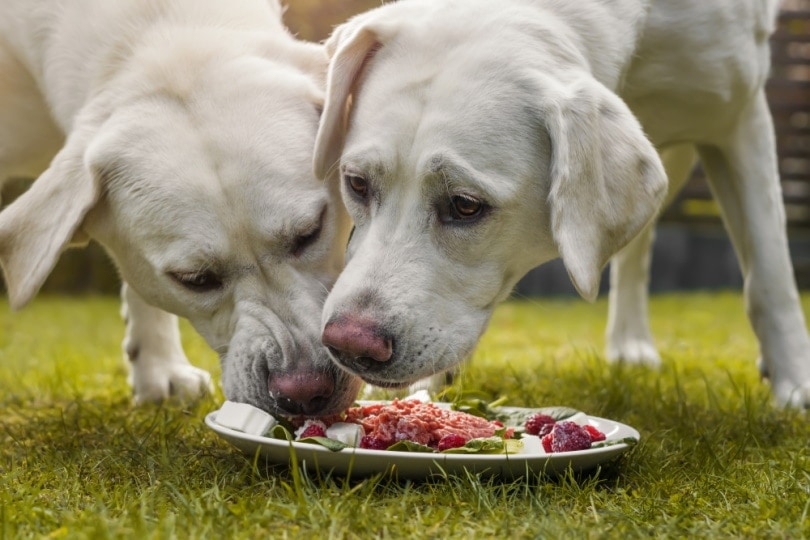
The Signs of Food Aggression
Food aggression can show up in a multitude of behaviors, as mentioned going from mild to severe. What are some clear signs your pet is guarding their food?
- Their body becomes rigid or their hackles rise
- They hover or crowd their food bowl, keeping their face close to it
- Their tail is lowered or tucked underneath them
- They try to take control of other pets’ bowls at mealtime
- Their pin their ears back
- They show their teeth
Top 9 Ways to Address Food Aggression:
If your dog is trying to dominate their food due to their breed and nature, then you need to assert yourself as the pack leader and make sure they know you are in the lead.
However, if your dog lacks confidence or security due to a disruptive event in their life, then you need to build confidence in them so they feel safe to eat with humans around.
Always remember you do not need to struggle to do this on your own. If you need help finding behavioral help for your pet, good recommendations are available for finding someone.
1. Create a Routine
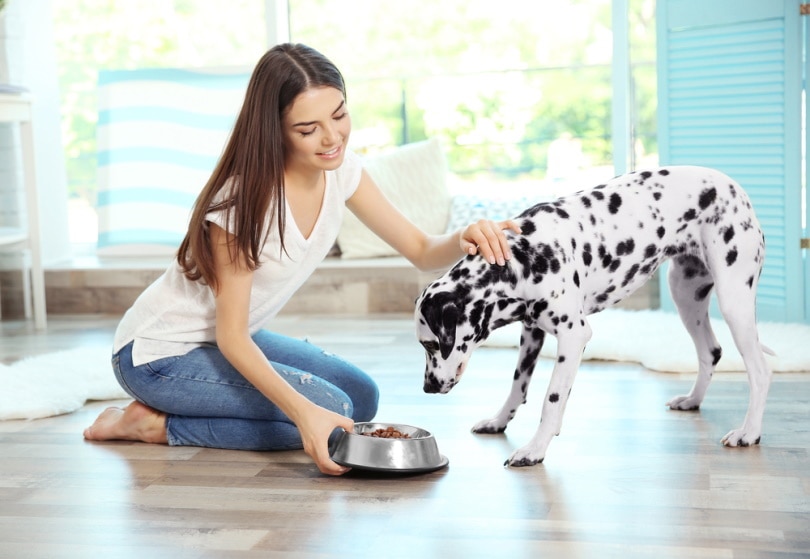
Consistency is the first pillar of building trust with your pet. Feed them at the same time every day and in the same place. Let your dog know what to expect in the routine so they can predict your behaviors.
2. Feed Them Alone
If you have multiple pets and one is anxious around their food, try feeding them alone in a different room. Creating a calm and quiet environment for them to eat in helps to soothe their anxiety and sense of competition.
3. Eat First
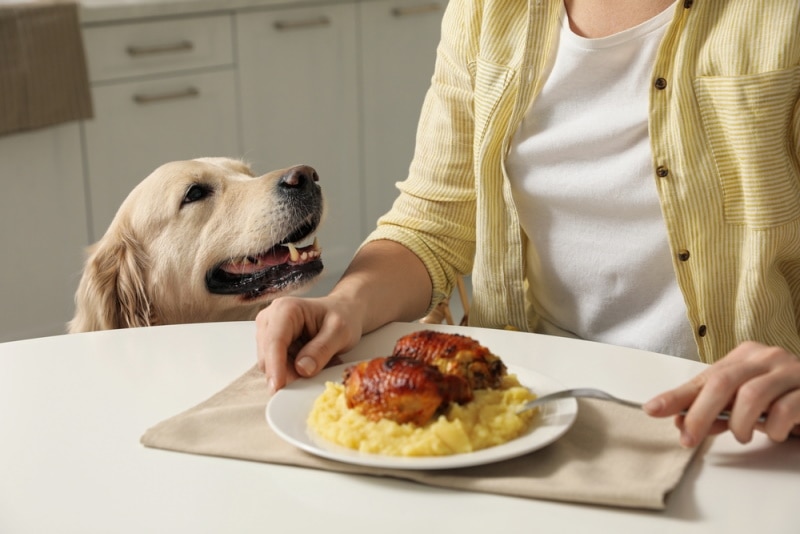
If you were in a dog pack in the wild, certain rules would apply that make clear hierarchy and dominance. In the wild, the alpha dog eats first, and the other dogs get to feed after that with what is left over. To establish a similar pattern in the home, it can send a signal to your pet that you are the alpha dog if you eat first before their mealtime. Let them know you are the leader, and they can follow with confidence.
4. Practice at Treat Time
Meals can be highly charged for your pet at first, especially if they have experienced trauma related to food deprivation. A good way to break the ice with your pet is to begin to train them to be less aggressive at other times. Using a session of regular training with treats as rewards can help them to learn the basics of taking food from a human. Remember to hold your hand flat, neutrally, and confidently as you feed them treats. This practice helps them to recognize you and their mutual interdependence.
5. Create Calm Through Discipline
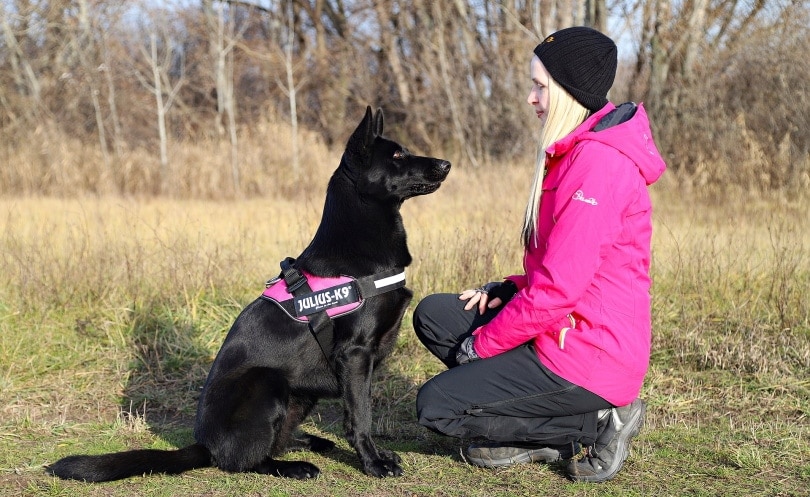
Using basic training (sit, stay, lay down, etc.), you can help interrupt your dog’s instinctual behavior patterns and create a pause where they can focus and regroup. Asking your dog to sit, lie down, and stay while you place their food bowl down helps to slow them down and focus on your commands. Even better would be to have them do this outside of the room you are feeding them in and then, when you are ready, call them in slowly and calmly. This changes the whole tempo of feeding and makes them less likely to be reactively aggressive.
6. Do Not Back Away
It is important not to reinforce your dog’s aggression by giving in to it. They need to know that you will not back down, but it is also important that you do not escalate the aggression yourself. You can remain neutral and work to get them used to you being close by at feeding time. A struggle over the dog’s bowl will result in a zero-sum game in which your dog can take over.
7. Feed by hand
Using a flat palm, you can hold out handfuls of your dog’s food for them to take directly from you. By slowly feeding them this way and then placing handfuls of the food in the dog’s bowl, you can get them used to your scent and proximity at feeding time. They learn to be dependent on you for food rather than defensive.
8. Use Treats
You can drop some treats in your dog’s bowl while they eat so that they associate your presence with an addition of good and yummy things rather than a threat to what they already do have. You can also do this between mealtimes so that they get used to associating you with a positive reward.
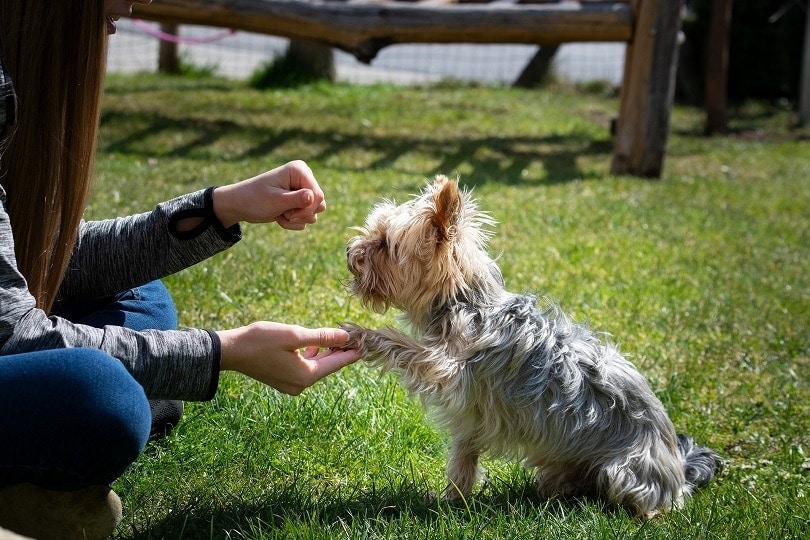
9. Offer Something Better
While your dog is munching away on their kibble, you can come close to them feeding and offer an even better treat, such as a sliver of chicken or another favorite treat. This trains them to understand that you can be a welcome presence at mealtime and that you are working in their best interest to ensure they are well-fed. It also allows them to pause from guarding their bowl and realize that their food is still safe.
In Conclusion
When retraining your dog to be less aggressive, you are adapting their behavior in two ways. First, you are using an exposure strategy to get them to be less sensitive to your presence near their food and while they are eating. Second, you are teaching them that you are their ultimate caretaker so they associate treats and food satisfaction with your presence at meal times.
Allowing your dog to guard and defend their food sets up a negative precedent that can impact other areas of your relationship and their behavior in the home. It is important that they accept your leadership and are confident in you as a caretaker.
It is also important to lessen aggression to protect other family members in the home, especially young children who may find themselves between the dog and their food, potentially creating a dangerous situation. Or perhaps you go out of town and have to ask a friend to care for your pet. Making it a priority to have calm and gentle feeding times is a great investment in the overall affection and enjoyment your pet and your family share together daily.
Featured Image Credit: Olena Yakobchuk, Shutterstock



